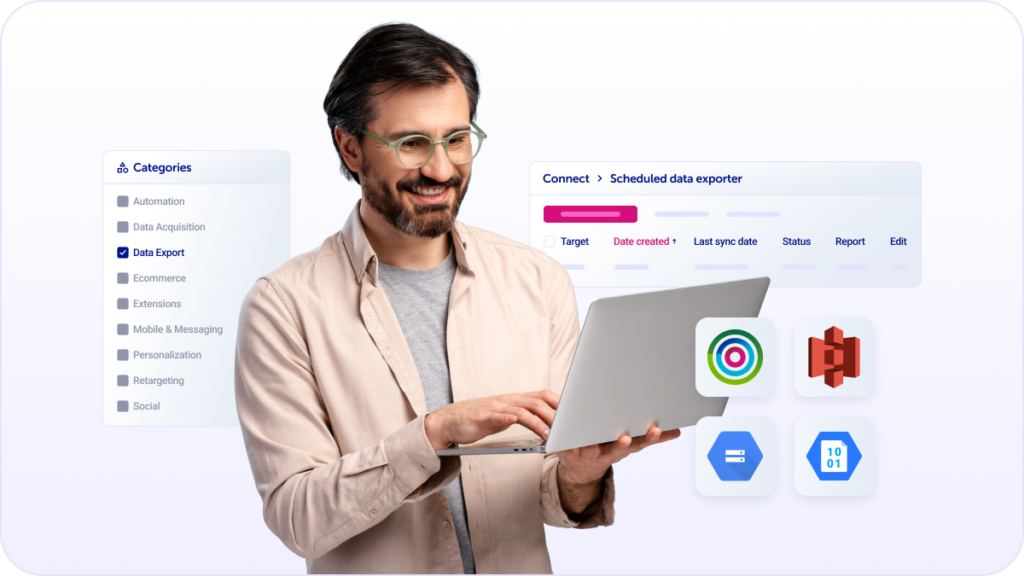What’s an API? The marketer’s definitive guide is here!
I have a problem. At weddings, parties, or family gatherings, someone will generally ask what I do. “I’m a technical writer”, I reply. They look confused and then ask what that means. I find myself saying something about ‘documenting APIs’, at which point any audience I may have gathered has sidled away, keenly looking for their next canape.

Why is that? It’s probably because most people – certainly people who don’t work in any kind of IT-based business – don’t know what an API is. Moreover, most people don’t know what ‘API’ stands for.
API is an acronym and it stands for ‘application programming interface’. Explaining that doesn’t really help matters though! Let’s try with a very simple definition: an API is a set of functions and procedures that allow different computer systems to communicate with each other. That’s a bit better, but it still doesn’t really help visualize how one works. In which case, let’s go back to that canape – because the idea of food and restaurants serves well as an analogy for an API.
The API – an analogy
It’s best to think of an API as a menu that you’re given in a restaurant. A menu lists all the dishes and drinks on offer, and you request something off it if you want it returned to you from the kitchen or bar. If you order something that’s not on the menu, then the kitchen won’t be able to make it and can’t return it.
Now, think of two separate computer systems. How is data exchanged between them?
Answer: via an API. An API lists operations that can be used by one system to request data from the other system’s database. As with the menu though, if you request something that the API doesn’t list then the other system won’t be able to respond with it.
However, unlike a restaurant menu, you can do more with APIs than just ‘return ordered food’ (data) from ‘the kitchen’ (the other system’s database). An API can also let you send the other system new data, update existing data, and delete data (with a restaurant menu, you’ll be extremely hard-pressed to send any food that you’ve brought along yourself into the kitchen, or to force them to throw their food away!)

So, there you have it. APIs work on a request/response cycle and they’re essentially the engine running under the internet’s hood, galvanizing all the online data connectivity that we’re constantly making use of.
For instance, APIs have enabled you to do all sorts of things, from ordering a pizza from your mobile phone using a food delivery app, to checking for the insurance deals on a price comparison site, to receiving a calendar notification that you’re due to check-in for a flight. Two or more systems are making this possible through the exchange of data via APIs.
The difference between private and open APIs
APIs can be used in different ways to facilitate different things. Some APIs are private ones, used solely within a company by that company’s software engineers to communicate between many different services and systems that make up the company’s overall infrastructure.
An open API (often referred to as a public API) is one that has been made available by a company for external users to consume. A company with a public API will have purposely designed their API to expose only a certain amount of services that their product offers (and not all, otherwise this would prove detrimental and a security risk), which will be documented online for software developers to make use of.
The better an API is designed and documented, the quicker a visiting developer can get up and running and start communicating with another system to build effective integrations.
APIs expand businesses
Public APIs are mutually beneficial. External developers get to extend their system or product by consuming the services of another company’s API, whilst the company offering the API benefit from lots of developers writing code and integrations that can be made public, shared – and in turn expands their product and business.

Businesses are fast harnessing the money-making potential of APIs to expose those services and make data available to external audiences. This enables integration and creation of new revenue streams. For some companies, the API is the product, such as cross-channel communications platform service Comapi (a dotdigital.company).
Why the Dotdigital API benefits you – the marketer
Dotdigital offers a powerful, flexible open API. As such, internal and external users consume our API for various reasons. It powers the premium ecommerce and CRM integrations that we offer, like Magento, MS Dynamics, and Shopify Plus. It also allows partners and customers to develop and build their own custom integrations and technical solutions for the platform.
How does this benefit you? It means you can point your developers to our API documentation so they can start making some of your keenest marketing automation wishes come true! It enables them to quickly get to grips with our API and create code that not only gets data out of Dotdigital, but gets your data in too – as well as automate various actions crucial to smarter marketing.
You’re no longer bound by the user interface of the app itself.
Find out more about how to use the Dotdigital API by visiting our dedicated API support page.

What can I do to benefit from the API?
Let me provide you with a few common scenarios in which the API helps with custom marketing automation:
- Import new signups to your site in real time: our API has several calls which means new signups are not only added to your CRM, but they’re also added to Dotdigital as contacts, so they can then be sent an automated welcome.
- Import order data from your store so it can be used to send better targeted and personalized content: our API has a number of transactional data calls that enables you to not only import historical order data but to also schedule keeping this data up to date, as new purchases are made, and orders updated. Once this data is in, you can go on to create contact segments and, if you have it enabled on your account, use advanced personalization in content.
- Export contacts’ email engagement data: our API features numerous calls that can export contacts’ key engagement data with your campaigns into your CRM, allowing you to create marketing lists and other actions to improve relevant targeting.
Get more automation tips and tricks from our free resources.
Hopefully, the concept of an API is a lot clearer now, and you understand the benefits. In which case, back to that analogy before I leave you…
Feeling hungry for integration? Take a seat at the restaurant, bring along your developers, hand them that menu, and put in your request.
In the meantime, I’ll wish you all ‘Bon API!’
See the Dotdigital’s API in action: watch a super-quick demo.



